The Go-To Bathtub Buying Guide
So you’re in the market for a bathtub and you probably don’t even know where to begin. There are thousands of different options available at all different kinds of price points. Do you want a free standing bathtub? A copper bathtub? Or maybe you can’t decide between an antique, contemporary, modern, or transitional bathtub. Well take your worrying hat off because we’re here to help with our bathtub buying guide!
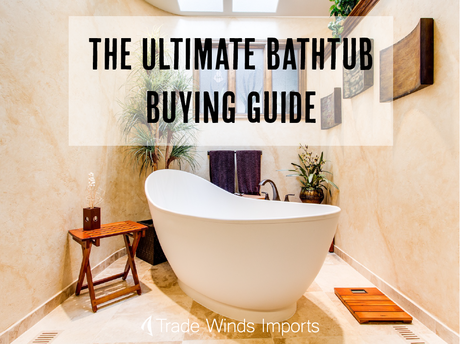
Table Of Contents
- Bathtub Experience
- Materials
- Types of Bathtubs
- Installation
- Plumbing
- Top 3
There are few things in life that are better than filling up the tub and relaxing after a long day. If you only have a shower, you’re really missing out. I guess you could lay down in the shower, but don’t tell anyone because they might start to worry about you. Anyways, there are a few general things you should be thinking about before you start shopping for a new bathtub. How often will you use it? How much money are you willing to spend? What kind of material are you looking for? What kind of style? Jets or no jets? We’re going to answer all of these questions, and more. If you’re researching bathtubs because you’re planning a bathroom remodel, check out our bathroom remodel guide for help with all your remodel questions!
Bathtub Experience
This may seem kind of silly, but one of the most important things to think about is what kind of bathtub experience are you looking for? The range of styles, sizes, and materials is so large that it’s good to have an idea of what you want. Hopefully, you’ll find everything you need to know in our bathtub buying guide. If you can spend an hour in the tub and value your time spent relaxing, you should consider a soaking tub made out of a material that retains heat well. The soaking tub will give you more space to relax and a material with high heat retention will allow you to chill out before the water starts to get too cold. Another consideration is your height. If you’re a bigger person, you’re going to need a bigger bathtub! Trying to cram yourself into too small of a tub is going to lead to a lot of frustration.
You also need to think about how much you’ll actually use a bathtub versus a shower. If you’re a die hard “tubaholic”, free standing and platform tubs should work out well. If you’re an occasional “tubber” but usually use the shower, an alcove style installation might be a better idea.
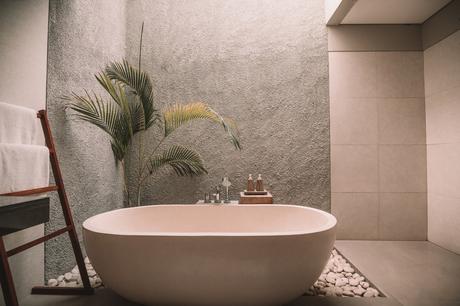
The cost of bathtubs and installation can be a deal breaker for many. If you’re on a budget and are looking to maximize cost and space, many acrylic tubs start at $200 for the cheapest option and alcove installations are the least expensive installation option. On the other side of the spectrum, a whirlpool tub with a platform installation will be a lot more luxurious, but could cost you between $2,000-$6,000. Of course, there are plenty of options in between, but those are a few examples that will get you started.
Materials
Acrylic Bathtub
Acrylic tubs are one of the more common options because of the relatively cheap price point. Acrylic sheets are soft and malleable which allows them to come in all sorts of shapes, sizes, and colors. These are great for large, small, and funky sized spaces. Choosing an acrylic tub means that you’ll have a lot of different options. The surface is smooth and non porous which means it retains heat better than some other tub options. If you’re looking to relax in the bath for extended periods of time and you want the water to stay warm, this is a solid option. Since acrylic is such a soft material it will scratch relatively easily. While this isn’t ideal, the soft surface means that scratches can easily be filled with more acrylic or polished out. Another factor to consider is that acrylic is a little flimsy because it’s so soft. This will be most noticeable upon installation. A way to remedy the flimsiness is to buy an acrylic tub that’s reinforced with fiberglass. While it’s a little pricier, the added stability will bring some peace of mind and the tub won’t feel quite as cheap.
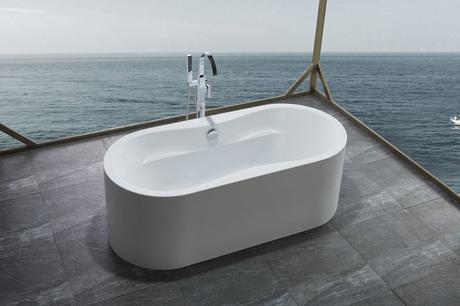
66″ Willowedge Acrylic Bathtub – $1,311.00
Fiberglass
Fiberglass bathtubs are another budget friendly option. They’re often even cheaper than acrylic bathtubs. One of the biggest advantages to fiberglass tubs is their easy installation. Fiberglass is a lightweight material that makes it easy to pick up and move around. If you’re considering a DIY bathroom remodel and are looking for tubs, this would be a good choice if you don’t want to deal with installing a heavy bathtub. As with acrylic, fiberglass is prone to scratching because of the soft surface. Like acrylic, it’s easy to repair any scratches that do occur. There are cheap DIY fiberglass repair kits that you can purchase. With a little sanding, filler, and epoxy based coating, your bathtub will look brand new. It’s a little time consuming, but a solid option.
There are a few negative aspects of fiberglass that are worth considering before purchasing.The lifespan of fiberglass tubs is about 10-15 years. Towards the end of their life span you’ll start to see fading and cracking occur. The material is flexible and will shift which can lead to cracking in the caulk around the tub. If this starts to get bad, the tub could move when you step in. Fiberglass is made by forming several layers into a certain shape. This means that uneven surfaces can occur.
Copper
Copper bathtubs are made by hammering several sheets of pure copper into the desired shape of the tub. The appeal of copper tubs is that they have an amazing design aesthetic, but the price point reflects that. They’re a little uncommon so it might be difficult to find a tub that fits into your space and when you do, it is one of the most expensive options available. A huge benefit of copper tubs is that they’re naturally resistant to scratches and chips. Additionally, the maintenance is almost nonexistent. Another thing to consider, copper tubs are extremely heavy. They can be a huge pain to install, especially if they’re going up a flight of stairs. Overall, the luxurious aesthetic is very appealing if you don’t mind price tag.

Cast Iron
Cast iron bathtubs are made by pouring molten iron into a bathtub mold and then smoothing it out and covering in a layer of enamel. One of the big advantages to cast iron tubs is that they’re the most durable option on the market. They are highly resistant to scratches and chipping and are very low maintenance. Most if not all stains and marks will wash over with warm water and baking soda. If that doesn’t work, a light cleaning solution like comet will do the job. Another great positive to cast iron is that the heat retention is the best of any material. If you’re planning on chillin’ for an extended period of time, cast iron will be your best friend. A downside of cast iron is the weight. As you can imagine, it’s one of, if not the heaviest option available. The extra weight is so significant that it’s worth taking the time to ensure that your bathroom is structurally sound enough to have a cast iron bathtub. Based on the materials involved and ensuring your structure is strong enough to hold a cast iron tub, the cost ends up making these tubs some of the most expensive available.
Ceramic
Ceramic bathtubs are made by putting together ceramic tiles and then heating them until they form together. This material has a lot of options because it’s easy to mold the tiles into almost any kind of size and shape. On the downside, ceramic tubs usually require a lot of maintenance. The grout that holds the ceramic in place will need constant attention and upkeep so it doesn’t deteriorate. Additionally, your bathtub won’t be very smooth because of the different tiles being held in pace. Overall, a ceramic tub is an acquired taste and probably not right for most people.
Stone Resin
Stone resin is a cool material because it’s made to look like natural stone. The material is non porous and very smooth. It doesn’t absorb any water and also retains heat very well. A stone resin tub will look high end and luxurious compared to other options. An added benefit is that the life span is nice and long with very little maintenance required. Once it finally reaches the end of it’s life, the entire tub is 100% recyclable. If you’re looking for a sustainable option, you found it! Overall, the price, quality, and durability make this one of your better options!
Types of Bathtubs
Standard Bathtub
As you would have guessed, the standard bathtub is the most common type of tub that’s available. There’s nothing special about the standard tub, it’s just a great place to chill out after a long day, no frills. Most standard tubs are about 5’ in length, 30” wide, and about 14”-16” high. This is a good option if you’re just looking to replace an older tub and don’t want to spend a crazy amount of money. The price range for these guys is anywhere from $200-$500. The price could go up based on your method of installation, which we’ll cover in the next section of the article.
If you’re on a budget and aren’t looking for anything special, this should be your go to option. It gets the job done, no strings attached.
Soaking Bathtubs
Soaking tubs are generally considered to be the next step up from your standard bathtub. The price range is pretty wide due to the huge amount of options that come with soaking tubs. They’re bigger than the standard tub, usually 60”-72” in length, wider, and deeper than than the standard. You can even buy models that fit two people comfortably. The base price for a soaking tub is usually around $500 but can quickly move to the thousands, especially if you’re a fan of water jets. Soaking tubs can also be found in most common styles like traditional, contemporary, modern, and transitional.
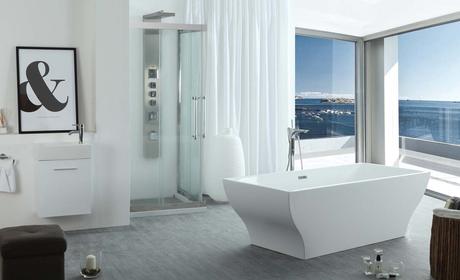
71″ Serenity Freestanding Soaking Tub – $1,279.00
Whirlpool Bathtubs
Whirlpool tubs are often associated with comfort, relaxation, and luxury. It’s like a mini hot tub right inside your home. The jets are strategically placed at different heights throughout the tub and targeted to hit different muscle groups. This kind of setup is ideal if you deal with any kind of chronic muscle pain. As you would guess, this kind of luxury doesn’t come without a cost. Most whirlpool tubs start at about $700 and quickly jump to over $1,000. If you’re really committed to muscle relief and relaxation, this should be your first choice.
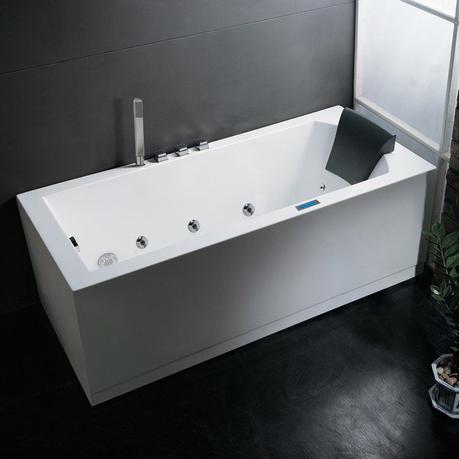
Francisco Modern Whirlpool Bathtub – $2,495.00
Air Bathtubs
Shockingly, an air tub is not just a bathtub filled with air. Air tubs are similar to whirlpool tubs but instead of jets shooting water, they shoot air instead. The pressure is more spread out and less concentrated than water jets. This is a more relaxing experience for a lot of people. The way they are built ends up costing a bit more than whirlpool tubs. They usually start at $800 and are often closer to the $2,000 price point.
Walk In Bathtubs
Walk in tubs are directed at older people and seniors because of their ease of use. It’s a little tougher for the elderly to step into normal tubs so walk in tubs are a nice compromise for those who don’t want to give up the pleasure of bathtubs. With the popularity of senior living centers decreasing and seniors opting to stay at home, this is a great option. However, these are far more expensive than some of their bathtub counterparts. The prices for these tubs end up being in the thousands. The general price range is between $2,000-$6,000.
Installation
Installation of bathtubs is one of the more important aspects of choosing a bathtub. The type of installation that is required heavily relies on the space and layout of your bathroom. Additionally, some types of installation require a certain category of bathtub. The last thing you want is to pick out the perfect tub and then realize that it won’t work with your bathroom. Returning a bathtub is a hassle that you definitely don’t want to deal with.
You’ll also need to consider bathtub surrounds. A bathtub surround is the smooth surface that goes along the walls and surrounds your bathtub. There are no cracks or grout lines to worry about and no maintenance. Installing a surround is generally pretty easy and there are DIY kits that you can buy so you can do it yourself. Installation price of bathtubs also depends on the tub material that you ended up choosing. Here’s a quick guide so you have an idea of general costs.
Fiberglass $200 – $500
Acrylic $500 – $900
Stone Resin $1,000 – $2,000
Cast Iron $1,200 – $2,200
Copper $1,500 – $3,000
For your installation options, here’s a quick rundown.
Alcove Bathtubs
The most common bathtub installation method is the alcove. This is when the bathtub is touching three walls, allowing one large space on one side to enter the tub. One of the reasons this is the most common installation method is because it is the easiest and fits into almost every bathroom setting. It also allows for the easiest installation of a showerhead. Having a standalone bathtub almost guarantees that you won’t be able to install a shower head. Although baths are relaxing, they’re not perfect for every occasion. This is also usually the most budget friendly option.
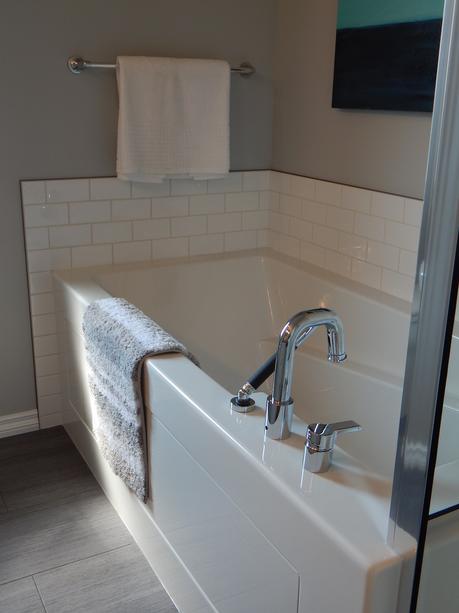
Freestanding
Freestanding bathtubs are common in luxurious bathrooms. You’ll often see glamorous photos of modern bathrooms with freestanding tubs in the middle of the bathroom. This is a good installation method if you want to use your bathtub as a focal point. It’s common to use cast iron, copper, or other high end material bathtubs for this kind of setup. Often, these installations are more form over function. It’s also worth considering that these tubs usually take up more space than others because they’re not sitting against any walls, diminishing the usable space.
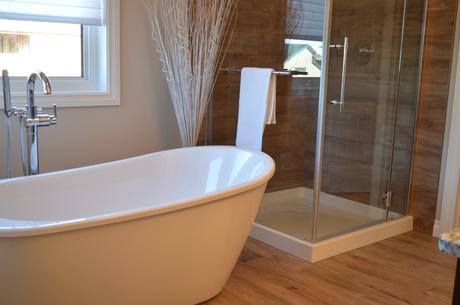
Corner Bathtubs
Corner tubs are popular in smaller bathrooms because of their space saving size and design. The corner tubs are usually touching the walls on two sides with one side being the open entrance point. The interesting shape means that they’re smaller than your standard tub. It’s important to plan out where the fixtures are going to be placed because you don’t want to put them in the way of your entrance and exit to the tub. We recommend sitting in an empty tub at your local bathroom fixture retail location.

Tigris Corner Whirlpool Bathtub – $2,545.00
Drop-In/Platform Bathtubs
The drop-in/platform style installation is great if you’re looking for an installation method that will blend in with the rest of your bathroom. To install a bathtub using this method, you have to build a frame/platform that with a space that you can drop the tub into. The edge of the tub will be basically level with the edge of your platform. This is an aesthetically pleasing design choice for a lot of people, but often costs much more than any other installation method. You have to consider the space that it will take up as well as the cost of building a structure that your tub will sit in.
Undermount Bathtub
The undermount tub installation is similar to the drop-in/platform method in the way that it sits inside a platform. The difference is that the surface of the platform surrounding the tub is covered in tile or stone. Again, another cool design choice that can add a dramatic effect to your bathroom. The downside is that it’s significantly harder to remove or replace because of the tile or stone work surrounding the tub.
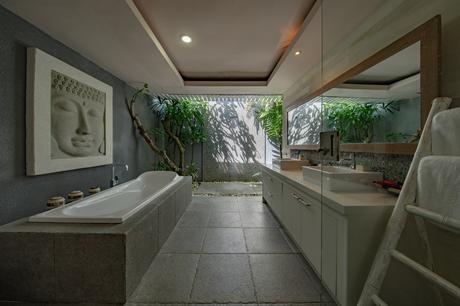
Source
Plumbing
The plumbing aspect of bathtubs isn’t quite as fun as picking a tub, but definitely necessary. There are a lot of things to consider. If you’re planning on replacing an old tub with a new one, you’ll have to take a look at your plumbing situation. If you’re opting for a larger tub, you might need to replace your old pipes with new bigger ones. Ripping out and replacing old pipes is another thing you’ll have to take into account when budgeting for a new bathtub.
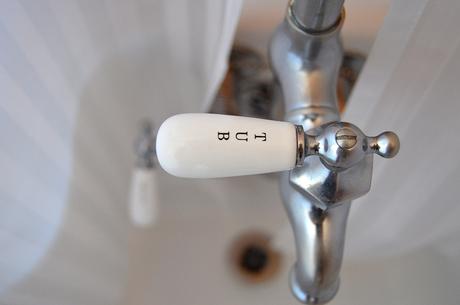
Source
If you’re planning on doing a full bathroom remodel and want to relocate your tub, that’s going to be another project entirely. You’ll have to change completely redo your plumbing so that it fits in with the new layout of your bathroom, which is a pricey choice. If it’s not done correctly, it could really mess up the plumbing of your entire house.
Piping Materials
The two most commonly used materials in home plumbing are copper and PEX. There are pros and cons for both.
Copper
- Pros
- Recyclable
- Resistant to bacteria
- Environmentally friendly
- Cons
- Prone to bursting/corrosion
- More expensive
PEX
- Pros
- Flexible – resistant to bursting
- Doesn’t corrode
- Contains heat well
- Cons
- Cannot be recycled
- Allows for possible water contamination
Top 3
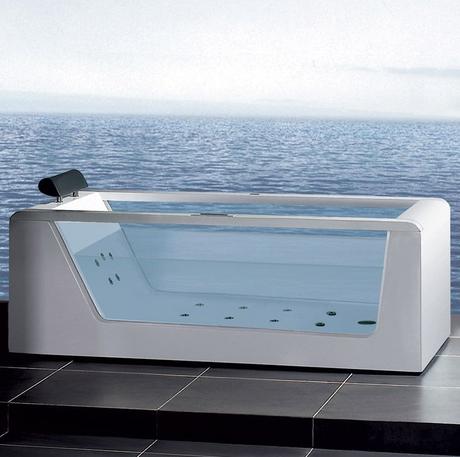
Lena Modern Whirlpool Bathtubs
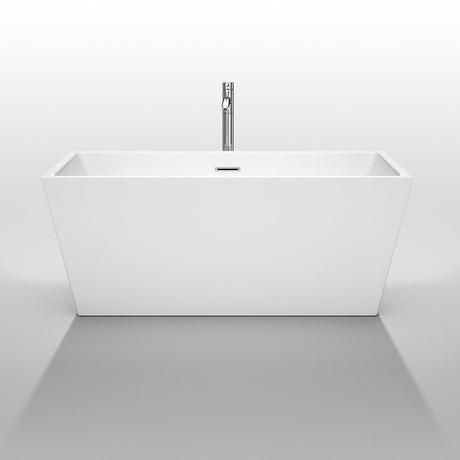
Sara Freestanding Bathtub
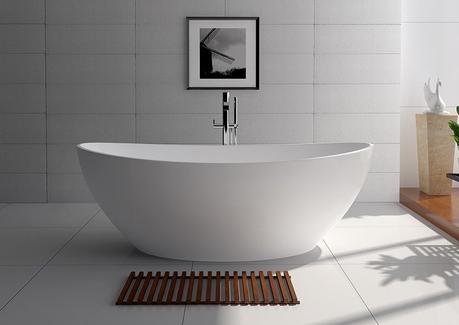
Willowjay Free Standing Bathtub
Conclusion
As you can see, there is a lot of planning and decision making that goes into buying a bathtub. We know it’s a lot of information but in the long run, it will be worth it to understand the ins and outs of buying a bathtub so you don’t regret it later on.
